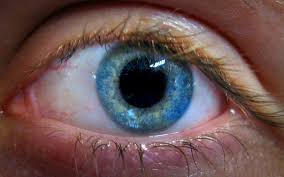
Breaking News
 How To Become Competent, Confident, and Dangerous, with guest Doug Casey
How To Become Competent, Confident, and Dangerous, with guest Doug Casey
 My Hot Take On Bill Gates' Climate Change Essay | Alex Epstein #457 | The Way I Heard It
My Hot Take On Bill Gates' Climate Change Essay | Alex Epstein #457 | The Way I Heard It
 Discussion on Covid Vaccination Should Be Non-Controversial
Discussion on Covid Vaccination Should Be Non-Controversial
Top Tech News
 HUGE 32kWh LiFePO4 DIY Battery w/ 628Ah Cells! 90 Minute Build
HUGE 32kWh LiFePO4 DIY Battery w/ 628Ah Cells! 90 Minute Build
 What Has Bitcoin Become 17 Years After Satoshi Nakamoto Published The Whitepaper?
What Has Bitcoin Become 17 Years After Satoshi Nakamoto Published The Whitepaper?
 Japan just injected artificial blood into a human. No blood type needed. No refrigeration.
Japan just injected artificial blood into a human. No blood type needed. No refrigeration.
 The 6 Best LLM Tools To Run Models Locally
The 6 Best LLM Tools To Run Models Locally
 Testing My First Sodium-Ion Solar Battery
Testing My First Sodium-Ion Solar Battery
 A man once paralyzed from the waist down now stands on his own, not with machines or wires,...
A man once paralyzed from the waist down now stands on his own, not with machines or wires,...
 Review: Thumb-sized thermal camera turns your phone into a smart tool
Review: Thumb-sized thermal camera turns your phone into a smart tool
 Army To Bring Nuclear Microreactors To Its Bases By 2028
Army To Bring Nuclear Microreactors To Its Bases By 2028
 Nissan Says It's On Track For Solid-State Batteries That Double EV Range By 2028
Nissan Says It's On Track For Solid-State Batteries That Double EV Range By 2028
Watch tiny robots swim through an eyeball to deliver medicine

Now, researchers have developed a tiny, rotini-shaped spiral that could one day be deployed in the thousands for targeted drug delivery.
Current treatments for eye diseases such as glaucoma or diabetic macular edema are delivered through direct injection or eyedrops. Those methods are effective but imprecise, often blanketing the entire eye in medication.
So scientists used nanoscale 3D printing to create spiral-shaped robots small enough to pass through the dense jelly known as the vitreous humor that makes up most of the eyeball. The researchers added a slippery coating and magnetic materials so they could propel the microbots through the eye using a magnetic field.
The scientists then collected pig eyes from a slaughterhouse, injected a solution containing about 10,000 bots into each eye, and then placed them in a magnetic field, which they used to propel the bots to the retina at the back of the eye. Imaging showed the swarm successfully reached the retina in less than 30 minutes, about 10 times faster than letting similar-size particles diffuse through the eye, the researchers reported last week in Science Advances.

 Dark Tidings
Dark Tidings Carbon based computers that run on iron
Carbon based computers that run on iron

